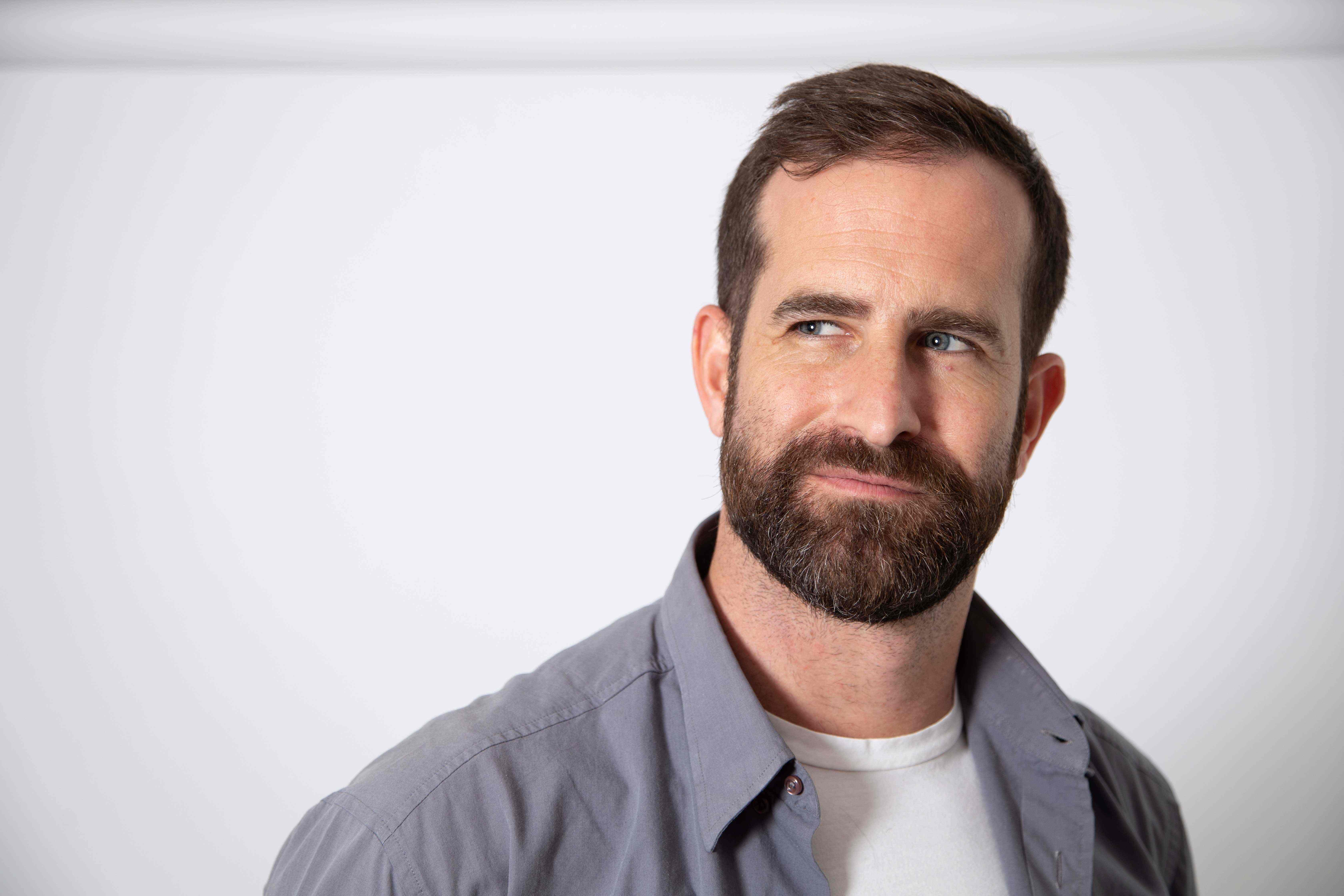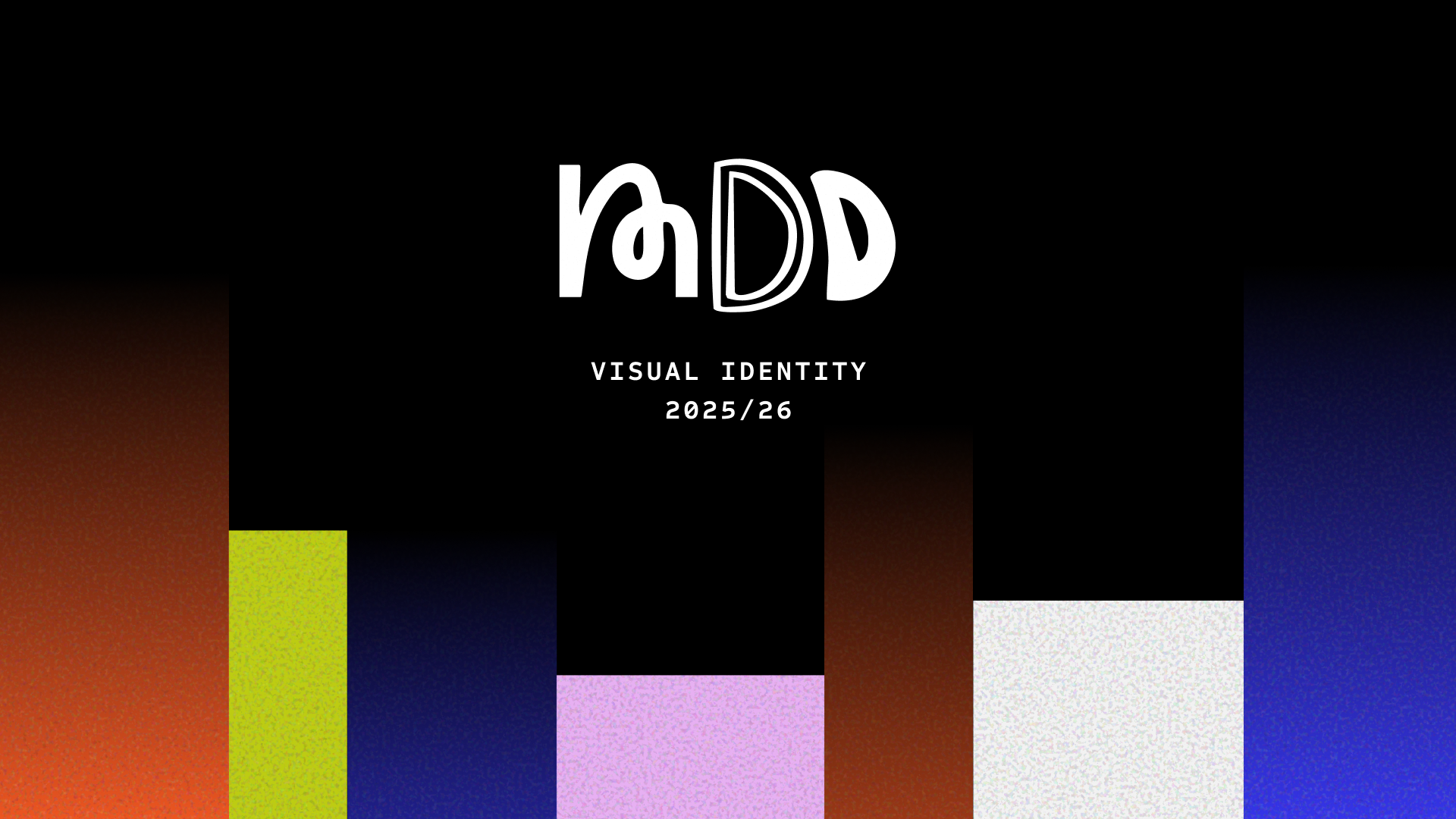Interview Jochem van Berne: “Often you have the best intentions, but it will bite you in the neck.”

"Listening is the key to start making a better world", states Jochem van Berne, currently Head of Marketing & Communication at Akvo. In a discussion with students Beatrice Neacsu and Simona Vargas Paraschivoiu about the importance of doing good in our work as designers.
In this open conversation, Jochem reminds us that oftentimes, even when we "have the best intentions, it will bite you in the neck", particularly when we "don't have a good understanding of the whole system." So how can designers balance doing work with positive impact while keeping the business design of a studio?
Beatrice & Simona: Let’s start with your design journey so far.
Jochem: I've been working at agencies for more than 15 years. I started in advertising but I was always fascinated about digital and the opportunities that it gave us and for me it was very clear already in the year 2000 when everybody got a hotmail address. We knew that this was going to change everything. And I think we're still in the middle of this digital revolution, but I felt the established advertising scene wasn't really picking up on it. And it did change the way we relate with each other, the way we interact with each other, it requires some technical thinking and requires UX and UI thinking. I felt like they were still stuck in the traditional way of having a copywriter and art director, and then get a big idea out there and it will work. It's a very different landscape nowadays and I consciously decided to go more and more digital in my profile and the agencies that I work for. I worked for agencies like MediaMonks, one of the biggest studios in the world, to Adventure Club, where everybody knows each other, everybody knows each other's qualities and everybody's kind of hybrid. And I feel it's kind of essential nowadays to bridge the disciplines between technology, design and business thinking.
B&S: What do you mean by 'hybrid'?
J: The creative industry is still organized in the sense of having strategic and account people, creative people and production or development/technical people. These three disciplines are one type of separation. Even within the creative field or the field of UX, you get this separation sometimes between expertises: for example you are a UX designer, but only work on the flows or you are a UX designer who only works on a specific tool. I don't think that's workable in our fields.
Designers should not only make pictures and work on visuals; they also really need to understand journeys, flows, technology.
B&S: Is mixing the business, design and technology disciplines part of being hybrid?
J: Yes. Strategist is a discipline, a job in itself. A creative director is a job. A developer is a job. But if any of those don't have at least an open mind towards those other disciplines, then I don't think the magic can happen. As a developer you need to understand the business key pointers that need to be achieved through your application or service. All designers should be good in visual design and something else. They should not only make pictures and work on visuals; they also really need to understand journeys, flows, technology... and in all of those things, they can find the solutions. I think that makes a good designer; you need to have the sense of aesthetics and design level, but you also need to have an understanding of how to apply it.
B&S: You talk about hybrid designers, however, most of the jobs out there are looking for specialized designers. How can a designer show that they know UX design, for example, but they also know more than that, without making them less of a UX designer?
J: I think meeting the requirements of a job posting is a good strategy. And in a conversation, you easily get that as well. Work on your introduction, to show your versatility, to show the different things that you like to combine. Because people that are hybrid as well, they will understand and resonate with that. And then it's a matter of trying to show that, it's not that you're not good in one or the other, but that you're good in more things.
Sometimes we have to do work that's not bringing us further into where we want to be; but it's in our DNA to do good.
B&S: How important is it for designers to build trust with both the team and with the clients?
J: It's mostly a process of being open minded to begin with, but it's also about delivering, such as agreements on times and deadlines. You can only gain trust by proving also that you deserve it. I'm always of the point of view that I trust everybody unless they prove me wrong. Then we will make agreements and if those agreements are not met, then we will take a step back, and in some cases decide as well that it's not a good relation. Initially, it's about giving trust, because if you don't give it, you can't get it.
B&S: How do you achieve a balance between business and innovation goals, but also the positive impact you want to bring in the world?
J: It's a delicate game. When it comes down to innovation as well, you're doing things that haven't been done before. So it's very important that we also feel our clients, in the sense that they are fearless and are willing to take risks. And for ourselves, I think for each opportunity of work that we get, we do need to balance it out as well. Why are we doing this? And are we doing this for the right reasons? And is this helping us on our path and on our vision indeed to create a positive change in the world? It's a roller coaster, to be honest. Sometimes we have to do work that's not bringing us further into where we want to be, but it's in our DNA to do good.
B&S: Was there any time when there was an ethical conflict that didn't allow you to move on with a project?
J: I've had those moments. When I was in Singapore, I was working for another creative agency and we had a project with Enfamil which is baby milk powder. The regulations are a bit different in Asia when it comes down to communication and campaigning. We were developing an application for doctors to have access to medical reports and the problem was that it was highly biased and filtered on not incorporating baby breast milk. In the end, baby breast milk is still the best for the baby but they were saying their baby milk powder is the best product to make your kids smart. I said I can't work on this. My boss was not happy, but in the end we pulled the block.
B&S: What advice would you give to a designer that finds themselves at the beginning of their career?
J: I think one is: stay eager. I am still learning every day and I think the willingness to learn is essential in our field, because it's changing so fast. It's very important to be flexible. When it comes down to tools, or whatever, each year is going to be different. And it's fun as well, because we are part of a revolution. And the second one is: Believe in yourself and look for environments that you believe can provide you with this growth opportunity as well. Don't go per se for the big name, or the money. Go for the environment that feels good, and where you feel that you can learn and grow and you will be fine. Even if it's not a good one, you will learn.
Sometimes, you try to do good, but because you don't have a good understanding of the whole system, it works against you.
B&S: Many designers want to do good but they also need to find a job that pays the rent. So how to balance those two?
J: Overall, it is a complex matter. Everything is related and that makes it complex. You start doing B and the outcome will be A. Often you have the best intentions, but it will bite you in the neck. I'm reading "The Laws of Human Nature" by Robert Greene at the moment, which talks about this phenomenon as well. There’s the story of a British conqueror who decided that a city in India had too many poisonous snakes on the street and they wanted to take them out. So they said: if you bring a dead snake, then you will get money for it. What happened was that the locals started to breed the poisonous snakes because they could get money for them. So, they scrapped the remuneration. As a revenge, the breeders threw all the poisonous snakes on the street. Sometimes, you try to do good, but because you don't have a good understanding of the whole system, it works against you. I feel with many of these cases that’s what is happening. Sometimes, it's a bit paralyzing, but I think, in the end, the essence is the intention to really try to do good, to really try to understand, to really make a difference. Even if it's a small step in a hole filled with poisonous snakes. It's a good thing to do.
B&S: How would you react when, even though you have the intentions to do something good, it ends up doing harm?
J: I think the learning principle applies also there. It happened. I ran a campaign for electric scooters and tried to change the behaviour of young people towards them, because at that time, they thought they were ugly and expensive. We ran into this point where we really tried to get a clear message on what the savings mean. We talk about CO2 savings a lot, but what does that mean? It's a gas in the air. It doesn't really say anything. I really tried to get scientific on it. I involved TU Delft because I thought the data that we were gathering with our application could definitely show something that has never been done on another point before, if we have the right calculations on savings. I think we ended up with an infographic showing football fields, but it's still not very tangible. Again, you get lost in the complexity, but at least I tried. I think, overall, electric scooters might not be better when it comes down to batteries, but it's a step in the right direction, to have less fumes in the sky. That's what I know. We might end up now with a whole pile of batteries that will poison our water, but at least I tried to move it into a better direction. So also don't be too hard on yourself.
This interview has been made possible with the support of Dutch Digital Design, which co-organized a series of events with the Master Digital Design

